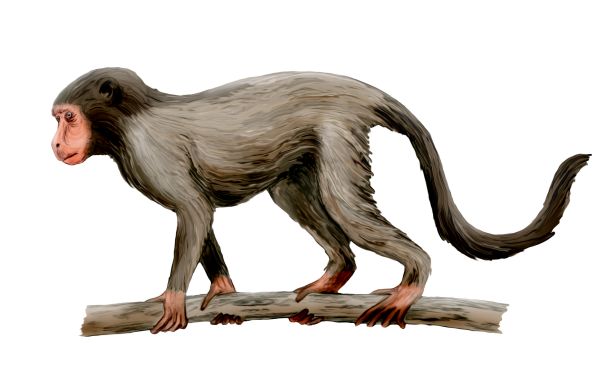Coming soon: our next stage, ? evolutus.
Options
Comments
-
I'm referring to your claim that a patient will suffer continuously and unceasingly until death post coccygectomy. You will need a reference/source for that.
It seems you've made an error here:
http://emedicine.medscape.com/article/309486-treatment#aw2aab6b6b2
The physical therapy involving manually working on tight, painful muscular structures such as the levator ani, coccygeus, or piriformis muscles, Myofascial release techniques, [and] Local modalities is for ? (a medical term meaning pain in the coccyx or tailbone area, usually brought on by sitting too abruptly), and is not the result of a coccygectomy, as you've mistakenly asserted. As for coccygectomies, your source does mention it as a solution to ? (patients may receive relief via coccygectomy) and refers to "postoperative complications" but as I've previously affirmed, these complications are temporary and include such things as infection which is not certain or permanent: potential risks include wound healing difficulties and/or local infection
http://en.wikipedia.org/wiki/?
http://www.spine-health.com/conditions/lower-back-pain/coccygectomy-surgery-? -tailbone-pain
-
You have made the claim that:
For example, the levator ani and other pelvic floor muscles attach directly to the coccyx; thus, some degree of sagging of the pelvic floor is possible after coccygectomy.........
Another important attachment to the coccyx is the sphincter ani externus, which is responsible for bowel continence (thus raising the possibility of surgical complications, such as ? incontinence).
^^^ possibilities, but not certainties. certainties. A successful operation may happen to avoid these complications.
However there is also a possibility that the surgeon fails, power fails, ect........
I made no errors.........
The material that I referenced was specific towards the surgical removal of the coccyx...............
I stated that the human body never fully recovers from the surgical removal of the coccyx..........
The human body never fully recovers from a coccygectomy.......
Prior functons are lost and have to be regained through physical therapy.......
Link?
Which functions might those be?
recovery from the surgery is a long and uncomfortable process for the patient.
Generally, it takes three months to a year after the surgery before patients see any relief from their symptoms, and of course sitting is very difficult throughout the healing process.
http://www.spine-health.com/conditions/lower-back-pain/coccygectomy-surgery-? -tailbone-pain
The patient does, does in fact, heal from the circumventing and suffers only temporary pain.
The multiple muscular and ligamentous attachments to the coccyx present additional anatomic concerns for patients undergoing coccygectomy.........
For example, the levator ani and other pelvic floor muscles attach directly to the coccyx; thus, some degree of sagging of the pelvic floor is possible after coccygectomy.........
Another important attachment to the coccyx is the sphincter ani externus, which is responsible for bowel continence (thus raising the possibility of surgical complications, such as ? incontinence).
http://emedicine.medscape.com/article/309486-treatment#aw2aab6b6b2
-
Infrequently, a child is born with a "soft tail", which contains no vertebrae, but only blood vessels, muscles, and nerves, although there have been several documented cases of tails containing cartilage or up to five vertebrae.
Intellectual dishonesty 101 : When quoting indicate that it is a quote. As found under the Human Tail section
http://en.wikipedia.org/wiki/Tail
And as a beautiful example of selective data and quote-mining the full quote is provided.
"Human embryos have a tail that measures about one-sixth of the size of the embryo itself.[1] As the embryo develops into a fetus, the tail is absorbed by the growing body. The developmental tail is thus a human vestigial structure.[2][3] Infrequently, a child is born with a "soft tail", which contains no vertebrae, but only blood vessels, muscles, and nerves, although there have been several documented cases of tails containing cartilage or up to five vertebrae.[4]”
Gotta love the part where you cut out the information DIRECTLY refuting your position but still use the source.
-
Infrequently, a child is born with a "soft tail", which contains no vertebrae, but only blood vessels, muscles, and nerves, although there have been several documented cases of tails containing cartilage or up to five vertebrae.
Intellectual dishonesty 101 : When quoting indicate that it is a quote. As found under the Human Tail section
http://en.wikipedia.org/wiki/Tail
And as a beautiful example of selective data and quote-mining the full quote is provided.
"Human embryos have a tail that measures about one-sixth of the size of the embryo itself.[1] As the embryo develops into a fetus, the tail is absorbed by the growing body. The developmental tail is thus a human vestigial structure.[2][3] Infrequently, a child is born with a "soft tail", which contains no vertebrae, but only blood vessels, muscles, and nerves, although there have been several documented cases of tails containing cartilage or up to five vertebrae.[4]”
Gotta love the part where you cut out the information DIRECTLY refuting your position but still use the source.
Whatever.......
Do I need to provide you a reference for the sun shining or the sky being blue?.?.?.?
If you like that you will love this one.......
"As the embryo develops into a fetus, the tail is absorbed by the growing body. The developmental tail contains no vertebrae, but only blood vessels, muscles, and nerves, although there have been several documented cases of tails containing cartilage or up to five vertebrae."
-
& That was included in the bibliography..............
See, coccyx....A link highlighting truth to what you're saying is long overdue.
So now I am intellectually dishonest?.?.?.?
FOH........
I have dropped mad references..........
Bibliography:
http://discovermagazine.com/2013/march/13-evolution-full-tilt#.UT67_xwz0ti
http://blogs.discovermagazine.com/gnxp/?p=18031#.UT7Jcxwz0tg
http://www.etymonline.com/index.php?term=vestige&allowed_in_frame=0
http://blogs.discovermagazine.com/crux/?p=1350#.UT9G2Bwz0th
http://blogs.discovermagazine.com/80beats/2012/11/08/the-secret-of-the-blind-mole-rats-cancer-resistance-revealed/#.UVDEeVeJ6M0
http://www.evolutionnews.org/2012/02/gulo_shared_mut056281.html
http://en.wikipedia.org/wiki/Pseudogene#Potential_function
http://emedicine.medscape.com/article/309486-treatment#aw2aab6b6b2
http://medical-dictionary.thefreedictionary.com/Pelvic+Relaxation
http://en.wikipedia.org/wiki/Coccyx -
there is also a possibility that the surgeon fails, power fails, ect........
Right. A successful procedure avoids risks involving temporary pain and a coccygectomy in general certainly does not put you at risk of any permanent damage whatsoeverI made no errors........
False. I've pointed them out for you.The material that I referenced was specific towards the surgical removal of the coccyx........
Not all of it. You just gave me links for things unrelated to what I asked for.I stated that the human body never fully recovers from the surgical removal of the coccyx........
...which is untrue. You need a link from a reputable source for such a claim.
-
Why else would a human have their coccyx removed?????
?
The multiple muscular and ligamentous attachments to the coccyx present additional anatomic concerns for patients undergoing coccygectomy.........
For example, the levator ani and other pelvic floor muscles attach directly to the coccyx; thus, some degree of sagging of the pelvic floor is possible after coccygectomy.........
Another important attachment to the coccyx is the sphincter ani externus, which is responsible for bowel continence (thus raising the possibility of surgical complications, such as ? incontinence).
Although a number of small studies have reported significant rates of symptomatic relief via coccygectomy, the authors of these reports have generally indicated that surgery was performed in only a small percentage of the patients presenting with ? . For example, one study reported that of all patients with ? referred for orthopedic surgical consultation, only 15% underwent surgical treatment.[20]
Further, most of the authors of the surgical studies have recommended a thorough course of nonsurgical treatment (eg, oral medications, series of injections) prior to considering surgery.
http://emedicine.medscape.com/article/309486-treatment#aw2aab6b6b2 -
-
For example, the levator ani and other pelvic floor muscles attach directly to the coccyx; thus, some degree of sagging of the pelvic floor is possible after coccygectomy.........
Another important attachment to the coccyx is the sphincter ani externus, which is responsible for bowel continence (thus raising the possibility of surgical complications, such as ? incontinence).
We've already went over this. Pay attention to the bolded. These are not certainties. These are possibilities, i.e. risks, of surgical procedure which is why care is needed. You still have not provided your source to back you up in claiming that a patient will never recover after a coccygectomy. -
 ? resort to posting silly gifs when they have no legs to stand on...............
? resort to posting silly gifs when they have no legs to stand on...............
-
For example, the levator ani and other pelvic floor muscles attach directly to the coccyx; thus, some degree of sagging of the pelvic floor is possible after coccygectomy.........
Another important attachment to the coccyx is the sphincter ani externus, which is responsible for bowel continence (thus raising the possibility of surgical complications, such as ? incontinence).
We've already went over this. Pay attention to the bolded. These are not certainties. These are possibilities, i.e. risks, of surgical procedure which is why care is needed. You still have not provided your source to back you up in claiming that a patient will never recover after a coccygectomy.
I don't know why it is so difficult for you to grasp that this is not a routine procedure.........
Although a number of small studies have reported significant rates of symptomatic relief via coccygectomy, the authors of these reports have generally indicated that surgery was performed in only a small percentage of the patients presenting with ? . For example, one study reported that of all patients with ? referred for orthopedic surgical consultation, only 15% underwent surgical treatment.[20]
Further, most of the authors of the surgical studies have recommended a thorough course of nonsurgical treatment (eg, oral medications, series of injections) prior to considering surgery.
http://emedicine.medscape.com/article/309486-treatment#aw2aab6b6b2
Without a coccyx, the pelvic floor muscles will be damaged and have to be rehabilitated............
Even when these muscles and tendons have "healed"
They will have to constantly be "trained" or have therapy to preform their original functions...........
-
Too much words my ? brain can't handle it ugh ugh ugh ugh
-
I don't know why it is so difficult for you to grasp that this is not a routine procedure.........
^^^ Red herring. Whether the procedure is routine or not is not the issue.
Without a coccyx, the pelvic floor muscles will be damaged and have to be rehabilitated............
Again, this is not a certainty and again, even with this risk, the effects are not permanent -
Childbirth is also a cause of pelvic floor damage; this does not mean that the damage is certain, i.e. childbirth does not necessarily cause damage to the pelvic floor. The coccyx, as a vestige, has little to no utility and its much larger function has been lost in humans.
-
The coccyx, or tailbone, is the remnant of a lost tail. All mammals have a tail at one point in their development; in humans, it is present for a period of 4 weeks, during stages 14 to 22 of human embryogenesis. This tail is most prominent in human embryos 31–35 days old. The tailbone, located at the end of the spine, has lost its original function in assisting balance and mobility, though it still serves some secondary functions, such as being an attachment point for muscles, which explains why it has not degraded further.
-
Lol.....
When have humans used a tail for "balance and mobility"?????
Choose your next words carefully............
They may be your last, as an evolutionist........

-
Lol.....
When have humans used a tail for "balance and mobility"?????
http://en.wikipedia.org/wiki/Timeline_of_human_evolution
-

If humans evolved from the "great apes" why do they have tails which is a trait associated with monkeys????????Apes do not possess a tail, unlike most monkeys. Monkeys are more likely to be in trees and use their tails for balance.
http://en.wikipedia.org/wiki/Ape
-
Humans are an ape. Apes evolved from other primates. The ancestor that apes and monkeys share had a tail.
-

That is Aegyptopithecus which is an example of the common ancestor we shared with monkeys. It may not be the specific species but it is from the correct time period and correct order.
http://en.wikipedia.org/wiki/Aegyptopithecus
-
LOL.....

You mean the fictional mythical theorized missing link........
Guess why its missing........
So, no ape species has a tail......
And you say:Humans are an ape.
Yet....
The human coccyx is an evolutionary vestige of a tail.........
FOH
بسم الله الرحمن الرحيم
bismi-llāhi r-raḥmāni r-raḥīm
In the name of ? , the Most Gracious, the Most Merciful.
-
The "missing link" is a false idea. There is no link missing.
No ape species has a tail. (As a general trait however an individual may be born with one.)
Humans are apes.
The Coccyx is an evolutionary remnant of a tail.
Nothing in the above statements are contradictory or even controversial to reasonable people. -
LOL.....
You say humans evolved from apes.......
&
The Coccyx is an evolutionary remnant of a tail......
Yet no apes have tails......
I guess the tail skipped a generation?????????
FOH
You have no evidence, other than your vivid infantile imagination to support the claim that humans had "functioning" tails.......
-
Humans are ? sapiens. They never had a functioning tail. Ancestor species of H sapiens did. The tail was not lost it seems gradually as your picture indicates. It was dropped 25mya with the rise of the Proconsul genus which followed Aegyptopithecus (30mya). Both Asiatic apes and African apes apparently descended from Proconsul.
http://en.wikipedia.org/wiki/Proconsul_(primate)
P.S. All Apes have the vestigial remains of tail not just Humans. -
Humans are ? sapiens. They never had a functioning tail.
Then the coccyx does not meet the definition of a vestigial structure................Biology . a degenerate or imperfectly developed ? or structure that has little or no utility, but that in an earlier stage of the individual or in preceding evolutionary forms of the organism performed a useful function.
^^^ So this definition, in other words, is:
A degenerate or imperfectly developed ? or structure that has little or no [usefulness or purpose], but that in an earlier stage of the individual or in preceding evolutionary forms of the organism performed a[nother] useful function.
Now.....
What your evolutionary science will not reveal is that the closest relative to humans in the animal kingdom is the pig........
Much is made about the closeness of chimps and humans.....
However, no ? transplants between the two has been successful.......
Opposed to the swine......
Which is used in ? transplants, skin grafts, and testing on things like bullet and shrapnel damage in humans......
Cloned Pigs Modified for Use in Human Transplants
http://news.nationalgeographic.com/news/2002/01/0103_020103TVclonedpig.html
http://www.cbsnews.com/htdocs/transplants/framesource_pig.html
In other words......
If you "evolved" from any other creature, it is the swine..............
Which is why......
Leviticus 11:7 - 11:8
And the swine, though he divide the hoof, and be clovenfooted, yet he cheweth not the cud; he [is] unclean to you.
Of their flesh shall ye not eat, and their carcase shall ye not touch; they [are] unclean to you.
All praise is due to Allah..............


